The concept of minimalism is the subject of many articles, YouTube videos and blog posts. People either love it or hate it and those who truly swear by it market it to other people as a cure-all solution for all types of problems.
Becoming a minimalist might seem daunting and unrealistic but what most people fail to recognise is that you don’t have to radically get rid of all your possessions to be a minimalist. There are simple steps you can take to embrace the minimalist lifestyle without having to turn your whole life upside down.
Minimalism is especially important for long term travel where too many possessions will only weigh you down. As a digital nomad you want to experience the places you are travelling to and not worry about overweight baggage or frantically packing the night before you leave. By only taking essential items with you you’ll change the way you experience travel and relieve a lot of stress.
Minimalism doesn’t have to be an all-or-nothing concept. It means something different for each person and getting started is actually not as difficult as you might think.
What is minimalism and why is it so trendy
This trend emerged in the late 1950s as a concept of extreme simplicity. In recent years it has taken over all types of niches such as interior design, lifestyle and of course travel.
People practise minimalism in different forms. For some, it means getting rid of any possessions that aren’t absolutely necessary. For others, it simply means decluttering and avoiding fast fashion. Minimalism doesn’t only promise a life free of material possessions but also an altered mindset and an essentially deeper level of happiness in life.
It has become increasingly attractive for digital nomads and is an essential part of remote work. Even those travellers that do not identify as minimalists tend to use most of its principles to help them travel longterm. One might go so far as to claim that a digital nomad lifestyle isn’t realistic without some level of minimalism.
Minimalism and digital nomads
Most people shy away from the digital nomad lifestyle because they cannot imagine giving up their current apartment or house and all the furniture, clothing and belongings it contains. Full-time travel and remote work mean that you cannot keep your home base unless you want to spend most of your earnings on paying rent for a place you’re not even using.
Some digital nomads choose to place the most important of their belongings in storage which is a viable option but can be expensive in the long run. From a minimalist perspective, you shouldn’t keep anything that you don’t absolutely need or that has some sort of emotional attachment. If you’ve been travelling for years without using any of the things you have in storage, chances are you’re not going to need them in the future either.
The first step to becoming a digital nomad is to reduce your belongings considerably. That means selling furniture, donating clothing and only keeping things you’re going to take with you or things you want to leave in storage. This process can be hard especially if you are emotionally attached to some items. But life as a digital nomad will only work if you don’t have to carry multiple large suitcases with you wherever you go.
Learn how to become a digital minimalist with this great book!
In this book, professor Cal Newport shows how to pair back digital distractions and live a more meaningful life with less technology.
You’ll learn how to:
· Rethink your relationship with social media
· Prioritize ‘high bandwidth’ conversations over low quality text chains
· Rediscover the pleasures of the offline world
Minimalist travelling
When most people pack for a trip they end up taking a lot of things they’re never going to actually use. This could include extra clothing items that will never be worn or a whole bag of skincare and toiletries. Avoid luggage fees and heavy suitcases in a few simple steps with these minimalist strategies.
Packing as a minimalist
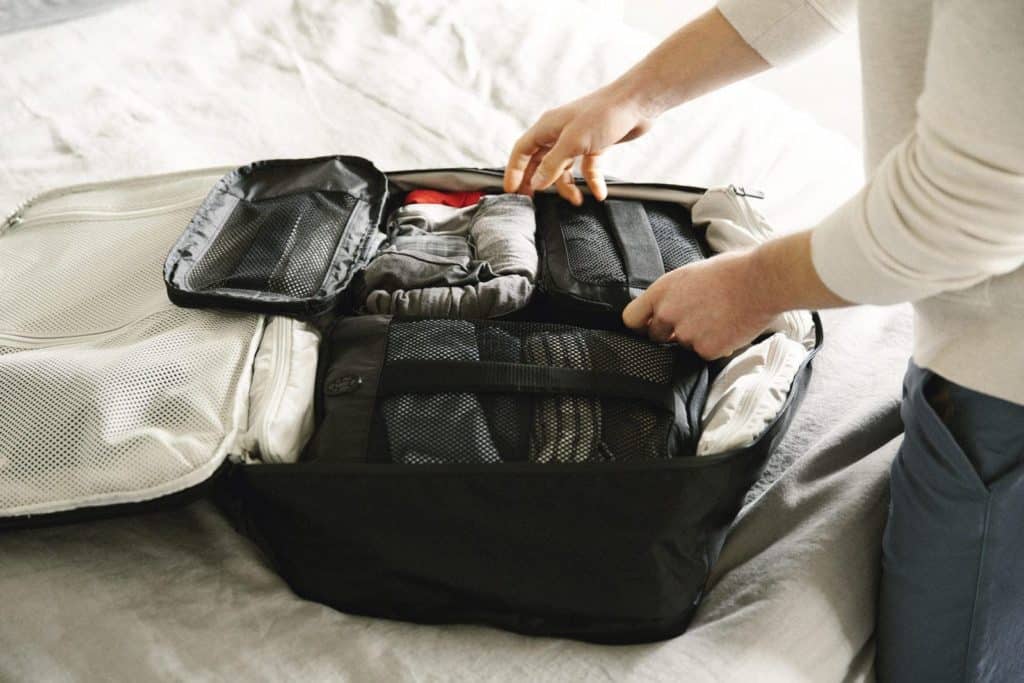
The first step to travelling as a minimalist is to only take what you really need. Invest in some high-quality items that you know are going to last for a while. This especially applies to your bags.
A major mistake most people who want to take the first steps for becoming a minimalist make is to use a cheap bag. You need something durable and lightweight so you have the maximum space available. Consider whether you prefer travelling with a suitcase or if a backpack could be enough. If you’re going to be changing location frequently a backpack might be more convenient.
Looking for the perfect backpack for your digital nomad lifestyle? We have reviewed the best ones on the market to make your life easier
Minimalist Clothing
Clothing can make up the majority of the things you pack for your trips. Next time you go on a trip pack your bag and when you finish take half of the things out again. You’d be surprised how little you actually need to live comfortably.
A good place to start is to only take enough clothing for one week or less if you can. No extra socks or shoes allowed. If you really need something you can always buy it if necessary. Try to only take very high-quality pieces of clothing that are durable and won’t wear out after a few washes.
Make sure they are all a similar colour and avoid whites so they can all be washed together. Put functionality first and don’t take anything that will be difficult to combine or uncomfortable. Make a rule that if you haven’t worn a piece of clothing in two weeks or more it gets donated or thrown out.
Minimalist Electronics
Try to keep your electronics to a minimum as they tend to take up a lot of space and weight. Consider carefully what you actually use and what’s worth taking.
Do you need to take your laptop, iPad and iPhone or could one of the three maybe stay home? Invest in a high-quality travel adapter so you don’t have to carry different versions with you and make sure to only pack the cables you’re actually going to use. You can always buy replacements along the way if anything breaks.
Minimalism and Slow Travel
Slow travel is all about taking a moment to breathe and truly embracing the place you are seeing. This concept separates tourists from true travellers or digital nomads who experience places differently.
Instead of rushing around and doing as much as possible in a short period of time, slow travel is simple and intentional. It works well with minimalism as it rejects ideas of material happiness and encourages spending time in a place instead of buying souvenirs or taking photos in impractical outfits. It takes away the pressure of having to see everything and emphasises enjoyment instead.
Van life and Tiny Housing – A modern way of minimalistic living
A great way to reduce your belongings is to put yourself in a smaller space that will force you to get rid of anything unnecessary. Van life is an incredibly popular concept which many digital nomads have embraced in the past years. It promises mobility combined with freedom and of course reduced possessions.
Vans are often home-built and constructed in a way that uses space efficiently. There is no space for clutter or items that don’t serve a purpose so minimalism almost comes naturally. This lifestyle is especially popular among digital nomads who value nature and love being location independent.
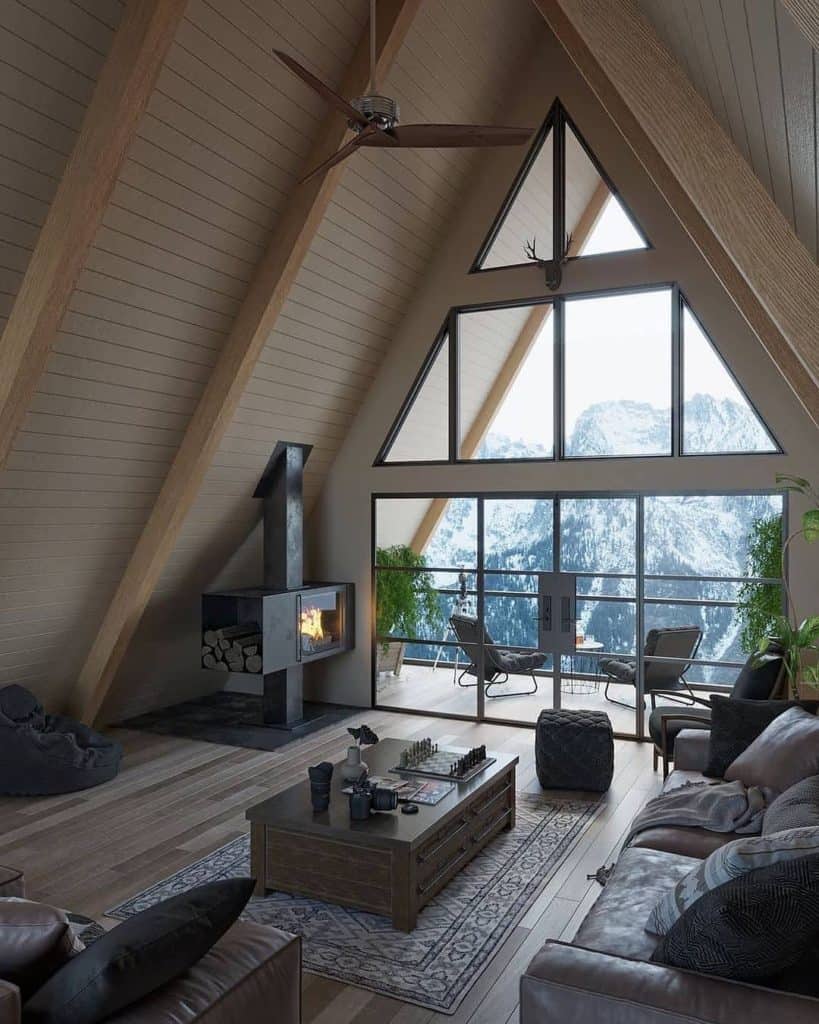
Living space in a van can be extremely tight and those looking for a more permanent space have popularised the concept of tiny housing. Tiny houses are usually constructed on a sort of trailer that can be moved but tends to stay in one spot. They have between 10m2 to 30m2 of space which needs to be used efficiently.
Tiny housing is popular among digital nomads who look for more stability but also a flexible and minimalist approach. Having too many possessions can feel overwhelming and almost like a responsibility so tiny housing represents a sort of freedom and escape from traditional society.
How to become a minimalist overnight
Becoming a minimalist doesn’t have to be a long process. You can get started today by taking a few simple steps but you will have to change your mindset to truly embrace being a minimalist. Here are some easy steps for becoming a minimalist overnight.
Avoid impulse buys. Before you buy anything new always ask yourself whether you really need this item. If you do buy new things make sure they are high quality and will last a long time
Take it slow. Getting rid of all unnecessary possessions in your life can seem overwhelming. It’s much easier to start small with just one room or section of your house. Take your time and truly consider what you need and what you could live without. If you’re travelling go through your belongings at least once a month and get rid of anything unnecessary.
Use Marie Kondo’s principles. Marie Kondo is a lifestyle guru and decluttering expert. Her strategy involves looking at each item you own individually and ask yourself if it sparks joy or if it’s really necessary. If an item is neither it can go.
Donate things. Sometimes it’s hard to get rid of things in your life because you don’t want to throw them away. If they’re still good to use consider donating them instead so someone else can enjoy them.
Don’t take duplicates or spares. When you’re packing your bag you might be tempted to take an extra shampoo or toothpaste. Remember you can buy most items wherever you go so there is no need to pack extras. They will only weigh down your luggage and take up valuable space.
Only pack neutral colours. If you’re going to be taking minimal clothing items you need to make sure they all match. Don’t pack a crazy coloured shirt you might only be able to wear once a month.
Try to digitalise as much as possible. One of the most useful steps for a beginner minimalist is to start digitalising important documents or photographs. That way you have them with you wherever you go without adding to your luggage.
Don’t put yourself under pressure to be perfect. You can always get rid of things along the way if you notice you don’t really need an item. Minimalism is a journey and takes a while to adjust to.
Last words on the minimalist lifestyle
If you’re thinking of becoming a digital nomad you will have to embrace minimalism. Travelling long term and working remotely is only realistic if you reduce your belongings and only take what you really need. If you find yourself with too many bags to pack you’ll lose the joy of location independence and be tempted to stay in one place again.
Dare to let go and embrace the freedom that comes with reducing your possessions. Begin today by taking the first steps to become a real minimalist.

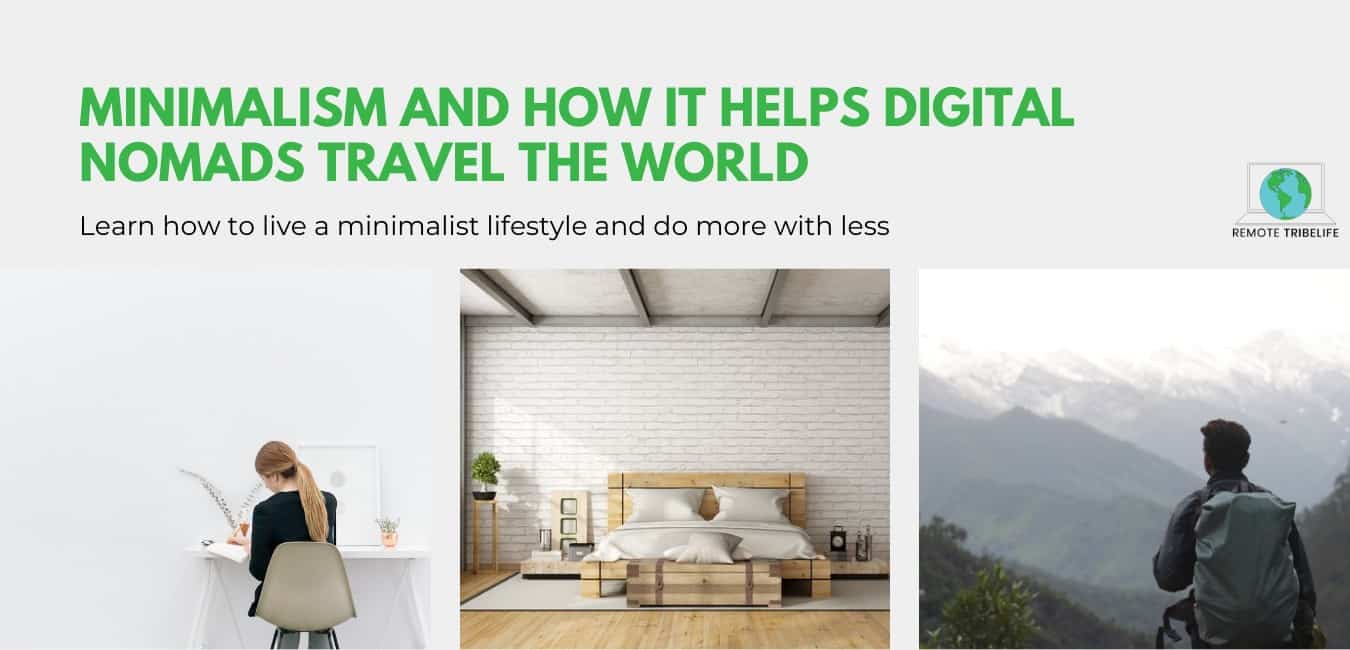





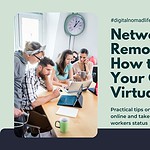


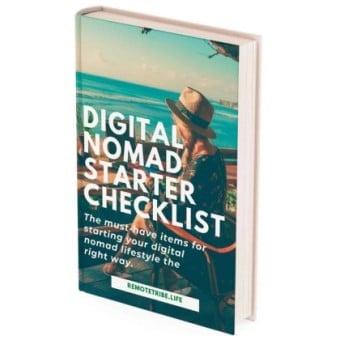
[…] Minimalism and How It Helps Digital Nomads Travel The World […]